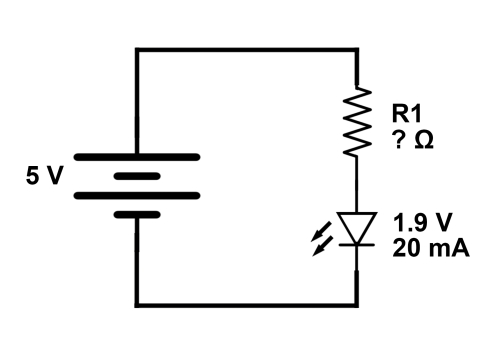Diodes and LEDs
There are two more components we should discuss: diodes and LEDs.
Diodes
A diode is a component that only allows current to pass in one direction. The arrow in the circuit symbol indicates this direction:

Next to the circuit symbol on the left, we have a real diode. The stripe represents the stripe in the circuit symbol, and the direction where the current goes out of the diode.
If we look at the following circuits, the one on the left will conduct current while the one on the right will not:

However, even when a diode allows current to pass, it drops the voltage. For a typical value, it drops the voltage by 0.7 V. Let's try and apply Ohm's law to the left circuit again. If the diode drops the voltage by 0.7 V, it means we have 4.3 V across the resistor. This will result in:

LEDs
There is a variation of the normal diode, called Light Emitting Diode or LED. It's basically a very small and efficient light bulb. We can find LEDs in everything these days: displays, phones, computers, toys, and so on. They have the same function as a diode, except that they also emit light when current passes through them. The electrical symbol is almost the same, but it looks completely different in real life:

They come in a variety of colors and power ratings. A typical 3-mm green LED will consume around 20 mA and will cause a 1.9 V drop across it. A diode doesn't restrict the amount of current through it, so we should always connect a resistor in series with a diode or LED. In the following schematic, we have a 20 mA LED that causes a 1.9 V drop. Let's try to calculate the perfect resistance for it:

Due to the 1.9-volt drop across the LED, we only have 3.1 V across the resistor. Now we can apply Ohm's law to find the resistance:

You can find an online LED resistance calculator at http://www.hebeiltd.com.cn/?p=zz.led.resistor.calculator.
























































